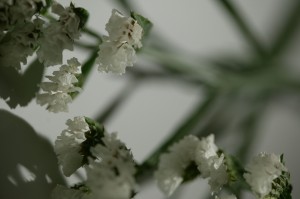Gypsophila
 Known as Baby’s Breath and Bristol Fairy, Gypsophila is a herbaceous plant which can be either annual or perennial. One of its more unique plants attributes is that it is pest-resistant, which makes it popular with gardeners.
Known as Baby’s Breath and Bristol Fairy, Gypsophila is a herbaceous plant which can be either annual or perennial. One of its more unique plants attributes is that it is pest-resistant, which makes it popular with gardeners.
Description
Gypsophila has many small yet striking flowers and, when in bloom, the Bristol Fairy variety produces a high number of pure white flowers. The leaves are narrow and grey-green in colour. At their peak, some species can become 1.5m tall, but that can take anything up to five years to happen.
Habitat
Despite one of its nicknames, the genus doesn’t come exclusively from South West England. Its origins can be traced back to Europe, Asia and North Africa. Nowadays, it can also be found in North America.
Availability
Gypsophila can be found mainly during the summer. However, some varieties are evergreens, which mean that they can be seen all year round. They usually bloom in the summer as a natural response to the sunlight.
Species
Aside from the Bristol Fairy (Latin name Gypsophila paniculata), there are roughly 100 species that are known. Most of them grow in similar formation to the Bristol Fairy, but the shades and shapes of their flowers vary wildly. Some have bright pink flowers, which contrast greatly with the thin green stems.
Care Tips
Grow all Gypsophila plants in well drained, alkaline/neutral soil with added loam or chalk. These plants love full exposure to sunlight, so it’s important to start growing around early springtime, so they can fully bloom in the summer. It’s also worth bearing in mind that they are at risk of stem rot.
Did you know?
The Gypsophila is one of only a handful of plants to have been awarded the prestigious RHS Award of Garden Merit.
References
http://apps.rhs.org.uk/plantselector/plant?plantid=891


